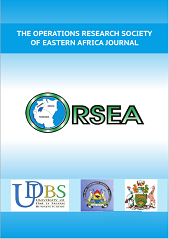An Empirical Investigation of the Role of Manufacturing and Economic Growth: The Case Study of Tanzania
Abstract
This study examines the effect of manufacturing sector in the economic growth of Tanzania, using annual time series data from 1985 to 2017. The study employed the Ordinary Least Square technique whereby Kaldor ' s first law was triangulated with exogenous theory to examine the role of manufacturing in the economic growth of Tanzania. Augmented Dickey-Fuller (ADF) test was used to test for stationarity. The variables regressed included economic growth, manufacturing growth, exports and employment growth. Granger Causality test revealed that there was unidirectional relationship running from economic growth to manufacturing growth contrary to what was hypothesised. In general, the findings were not in favour of the applicability of the Kaldor ' s first law in Tanzania because causality was running from economic growth to manufacturing growth instead of running from manufacturing to economic growth. This implies that the economy of Tanzania is driven by other sectors apart from manufacturing. It is thus observed that more efforts to improve and sustain manufacturing growth would make manufacturing the engine of economic growth. Intuitively, from the policy point of view the findings entails that in order to make manufacturing sector the engine of economic growth, enabling conditions to propel growth of the economy, necessary factors like capital availability, technological advancement, availability of skilled labour and promotion of export led manufacturing growth is necessary.
Keywords: manufacturing, growth, employment and causality






